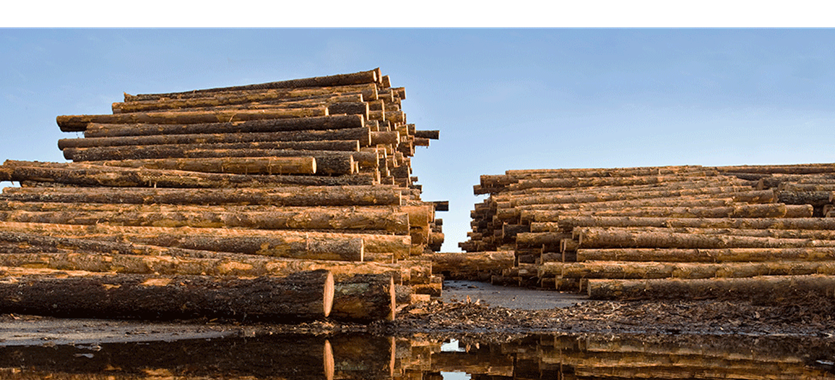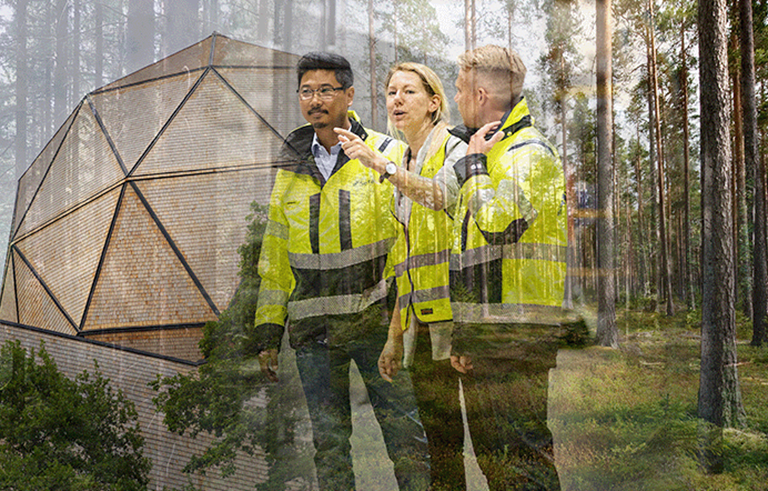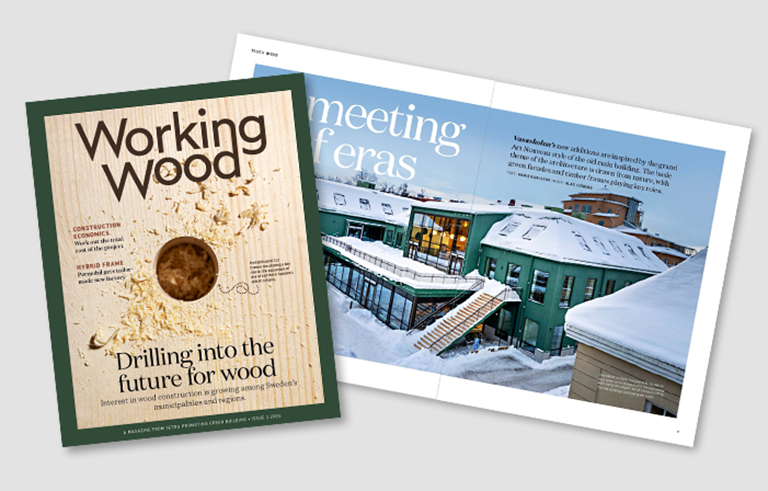Why water the timber?
Watering lowers the surface temperature when evaporation occurs, helping to eliminate fungal growth. It also protects the wood against insects, which need heat to gain a foothold, even though the majority of attacks take place in the forests. If, during the summer months, we need to accept large volumes – in the aftermath of a storm, for example – watering is essential in assuring the quality of the timber. We view it as a “safety valve”.
How can you water in a sustainable manner?
We use huge sprinklers that we set up in the timber yard to spread the water evenly and efficiently across a given area. In order to optimise the flow and manage our water resources, we use a control system which sprays out the volume of water calculated to evaporate from the wood on the basis of the prevailing conditions. This makes it possible to reduce environmental impact and to minimise the flow of water leeching out from the yard. The water that does not evaporate is led away from the timber yard via a culvert to a sedimentation tank where bark and other coarse particles are captured.
How often is the timber watered, and why?
This is principally defined by the stock turnover. At our Malå unit, we haven’t watered for 15 years. The summer is short there, and we maintain a good flow of timber. In Skinnskatteberg, on the other hand, we water every year. The reason for this is that we have numerous saw classes there, which means we need larger stocks – and this naturally increases the risk of blue staining. We are currently preparing to be able to water stocks at all our units if we suddenly receive large deliveries of timber, following a storm for example.
How is the need likely to change?
The effects of climate change are becoming increasingly noticeable, resulting in an increased risk of storm felling during mild winters. This also leads to more insect attacks, as well as a greater risk of drought and fires, which means areas of forest have to be harvested ahead of schedule so as to preserve the value of the wood. All in all, this means we envisage an increased need for watering in the future.






